

Did you know that Vietnam is quietly becoming a global powerhouse in manufacturing and infrastructure? That's right—this Southeast Asian marvel is rapidly outpacing bigger economies with jaw-dropping efficiency and innovation.
In the wake of global supply chain disruptions, Vietnam's strategic moves have made it an essential player in the world economy. This shift is not just a trend—it’s a revolution in the making!
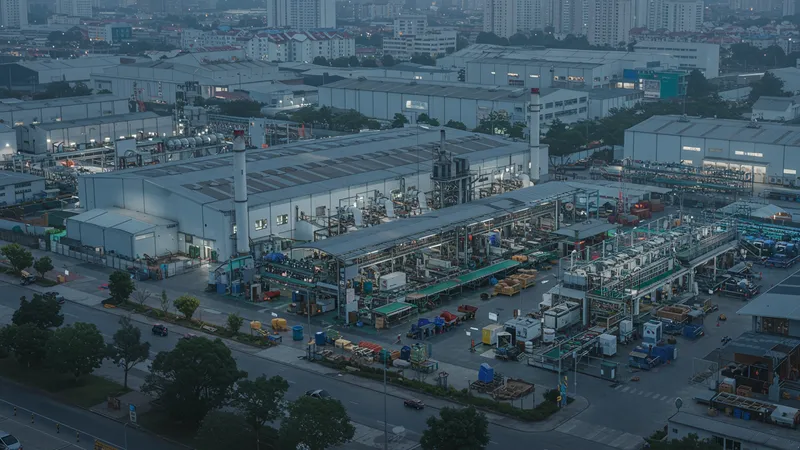
Once overlooked for its agricultural roots, Vietnam is now crawling up global production ranks with astounding rapidity. Not only has its economic ecosystem been revitalized, but it has also become a magnet for foreign investment, holding opportunities unrivaled in the Asia-Pacific region. But that’s not even the wildest part…
Moreover, Vietnam's commitment to sustainable infrastructure has put it on the map as a green leader. Their state-of-the-art factories double productivity while cutting emissions substantially. With green incentives and a skilled labor force, companies are flocking there in droves. But that’s just scratching the surface...
What happens next shocked even the experts, as Vietnam's growth strategy unveils layers of surprising tactics and hidden secrets that could change the entire playing field, leaving no room for doubt about its emerging global dominance.
The Port of Haiphong isn't just any port; it's the lifeline of Northern Vietnam's commerce network. Once a sleepy facility, it has transformed into a state-of-the-art hub catapulting the region into the big league of international trade. With an impressive 30% increase in trade efficiency, Haiphong is fast becoming a competitor to other traditional shipping powerhouses.
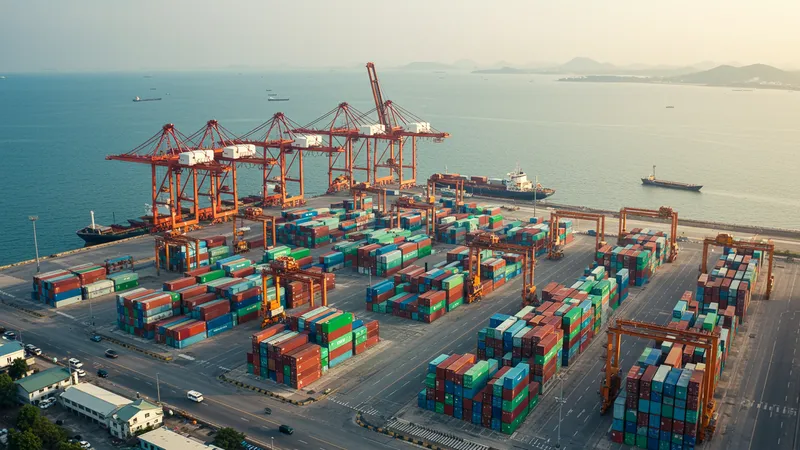
But this wasn’t achieved overnight. Strategic government incentives paired with foreign investment transformed the infrastructure, modernizing equipment and integrating cutting-edge technology. It’s these enhancements that have made Haiphong a go-to for cost-effective shipping solutions for global players. Yet, there's more to this port than just hardware upgrades…
A focus on environmental sustainability has played a crucial role in its success. Operating under green port principles, Haiphong has managed to balance economic growth with environmental responsibility. This unexpected juxtaposition has prompted other ports to rethink their strategies, catering to a burgeoning sector of eco-conscious clients.
And while Haiphong Port is a marvel in its own right, the story keeps unfolding. What’s next could redefine global shipping strategies, sparking a new era of competitive collaboration. Brace yourself for the unexpected twists that continue to propel Vietnam's infrastructures to places few could have predicted.
VinFast isn't just a new car brand; it's a symbol of Vietnam’s accelerating ambition in the global automotive market. Emerging as Asia's answer to Tesla, VinFast has launched electric cars that blend luxury with affordability—a bid that has captured global interest with starting prices at about $52,000.
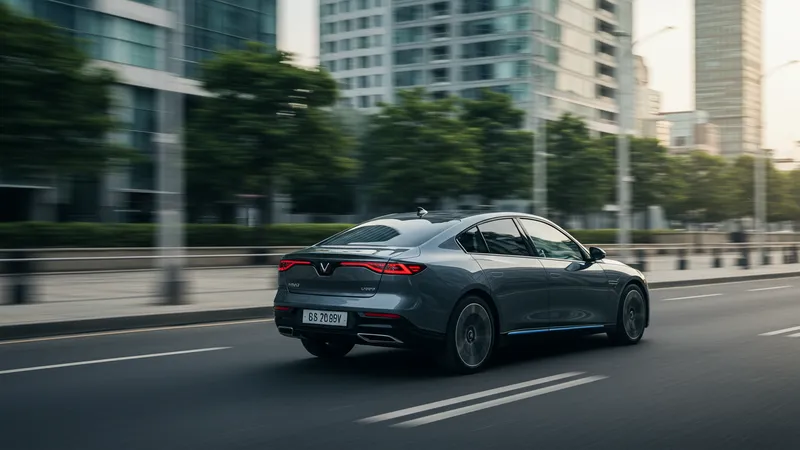
What distinguishes VinFast from its competitors isn’t just its competitively priced, eco-conscious vehicles. It’s the rapidity of its progression from concept to market delivery. In less than 48 months, VinFast went from an idea to rolling out cars internationally, a pace almost unheard of in the traditional manufacturing sectors.
Moreover, its commitment to sustainability isn't merely a marketing gimmick. VinFast's manufacturing processes strive to minimize waste and maximize efficiency, setting new standards in green automotives. This blueprint is expected to become a model for other emerging markets eyeing the automotive industry.
But perhaps the most compelling aspect is how VinFast is anchoring Vietnam on the global stage, luring investors and challenging older brands. And there's a twist to this saga—Vietnam's auto prowess is just one part of a larger narrative about its industrial growth. What’s unraveling could forever change how you view developing economies.
Vietnam's urban strategy exemplifies how tactical planning can revolutionize a nation's infrastructure. From bustling marketplaces to industrial parks, Vietnam is redesigning its cities into operational powerhouses. What’s fascinating is the integration of eco-friendly architecture with functional designs.
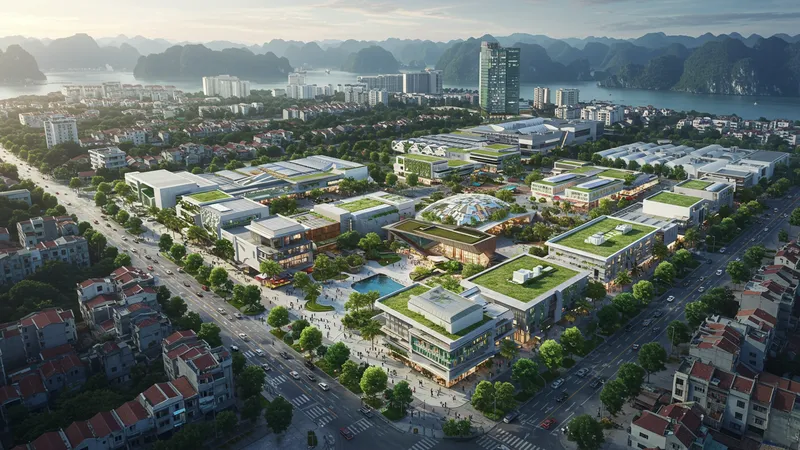
Ha Long City, for instance, is becoming a center of attraction with its beautifully designed, efficient public spaces. With projects aiming to reduce traffic congestion by 25%, it balances the pressures of urban expansion with quality of life. But that's just a piece of Vietnam’s urban puzzle…
The country's Eastern Economic Corridor, set to streamline business operations, hints at calculated foresight. Housing everything from business clusters to technology parks, it's a reflection of how urban spaces can become economic stimulants. It's far more than mere urban development—it's strategic economic empowerment.
Look past the skylines, and you'll find deeper stories of cities becoming hubs for innovation and creativity. This means that the steps Vietnam is taking could surprise those who underestimate its potential. There’s more to explore, with deeper layers awaiting below the surface.
Vietnam has quietly emerged as a champion in textile manufacturing, challenging both China and India with quality and speed. Amid trade shifts and global demands for quick turnaround, Vietnam’s textile industry stands out with efficiency that has shocked analysts worldwide.
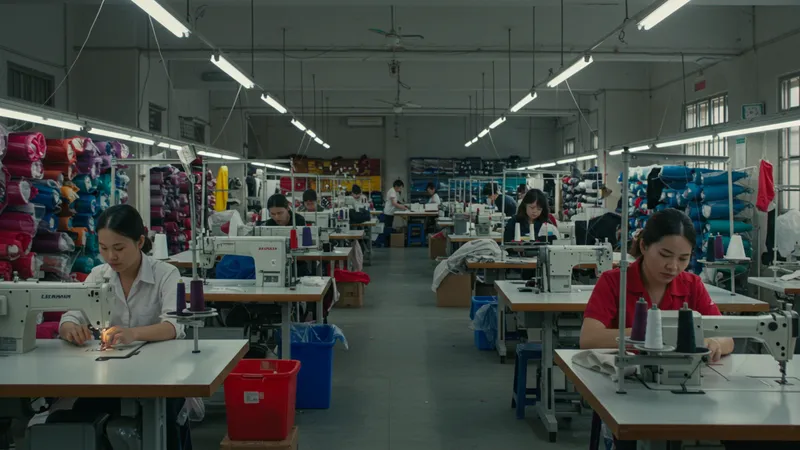
But it's not just about acting fast. Strategic training programs and labor policies ensure that the workforce is ever-ready and increasingly skilled. With competitive pricing and an eye for sustainability, Vietnam caters to top global fashion brands looking for reliable and ethical agreements. Though this growth seems phenomenal, there's more beneath the loom’s surface.
The push towards sustainable fabrics and ethical manufacturing isn't just a trend—it’s an integral part of their business model. Vietnam's textiles aren't merely about production; they're about crafting a future where sustainability meets style. Initiative programs bolster this by promoting eco-friendly materials that draw customers who care as much about the Earth as they do fashion.
Amidst a rapidly changing global scene, Vietnam offers a beacon of how manufacturing can be done right. The textile triumphs are just another chapter in this evolving story. And there lies the enigma—what can this development teach us about the future of global markets?
As Vietnam emerges as a global hub, there's an intriguing aspect often overlooked—its state-of-the-art, smart infrastructure. This isn't just about technology, but an overarching radar guiding everything from agriculture to urban planning and logistics.

These surveillance systems ensure that not only are projects running smoothly, but they're also securely efficient. For instance, regions heavily involved in rice production have adapted tech solutions to prevent crop losses, which saved up to 15% of previous wastage figures.
In a world where data drives decisions, Vietnam's use of AI and IoT signifies a proactive stance where seamless, efficient operations reflect a forethought that many countries aspire to emulate. However, these advancements raise questions about potential privacy concerns, highlighting a need for regulatory balance.
This technological conversation reveals more than meets the eye in Vietnam. It's about laying the groundwork for future industries while maintaining a focus on market adaptability. A shift full of consequences and opportunities that are extraordinarily compelling. What continues to unfold may spark conversations far beyond its borders.
In Vietnam's financial landscape, fintech emerges as a centrifugal force, transforming its economy. The digital payment systems and financial tech startups are not just buzzing—they're booming, drawing parallels with Silicon Valleys across the globe. Even traditional banks have hopped on board, offering services that synchronize with the world's fast-paced digital demands.
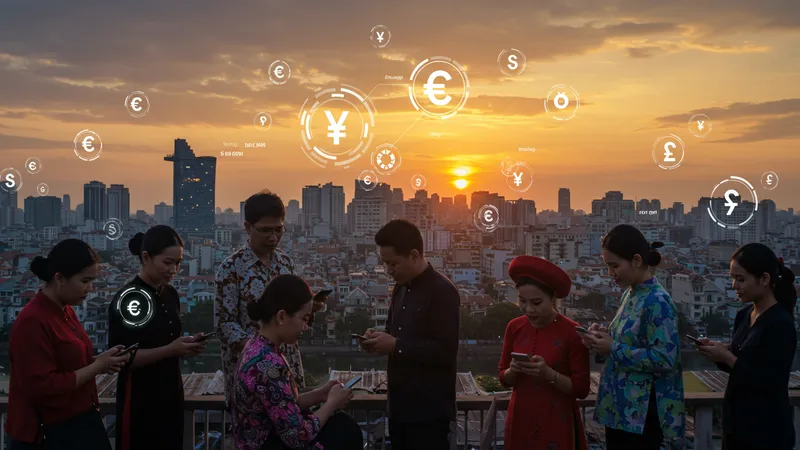
Their fintech platforms streamline transactions, reaching out to unbanked communities while lowering transaction fees by up to 30%. Such disruptive technology keeps Vietnam on a trajectory towards deeper financial inclusion, spelling promising growth for the country.
But beyond mere transactions, this fintech evolution opens broader narratives about economic equity. The integration of blockchain into traditional business systems sharpens competitive edges, while digital currencies begin playing a vital role in consumer habits and economic logistics.
This isn't simply economic adaptation—it's about leading innovation in a journey marked by agricultural banks pivoting to digital solutions. Vietnam is ripe with possibilities with its innovative mindset paving the way for a financially inclusive future that beckons the world.
Emerging like a phoenix, Vietnam's pharmaceutical industry is rewriting rules, edging closer to becoming the health hub of Asia. From producing generic drugs to being on the frontier of pharmaceutical research, Vietnam is crafting an intriguing narrative within global health circles.

A commitment to revolutionizing local healthcare efforts through affordable pharmaceuticals creates ripples across the market. This credibility earns attention worldwide from partners contributing to a shift that sees Vietnam moving beyond basic manufacturing to innovating health solutions.
Amidst this rapid rise, strategic partnerships with international health organizations yield extensive R&D opportunities. These collaborations lead to breakthrough studies, emphasizing efficiency and safety while offering promising health solutions.
These developments introduce potential for a reconceptualization of health accessibility, hinting at an industry on the brink of something expansive. With global eyes fixed on its pharmaceutical frontier, Vietnam charts towards a robust healthcare future that embodies progress in unprecedented ways.
Vietnam's culinary landscape is a testament to its cultural richness, weaving centuries-old traditions with modern flair. Often overshadowed by its neighbor, Thailand, or prey to the allure of Singapore, Vietnam’s gastronomy is bursting into the limelight, redefining what it means to be a culinary capital.

The nation has become a crossroads for flavorsome innovation, sparking a movement of fusion cuisine that excites culinary adventurers. The emphasis on fresh and simple ingredients produces poignant dishes packed with flavors that satisfy cravings and challenge global palates.
But the evolution doesn’t halt there. Vietnamese chefs, trained both locally and abroad, are pushing boundaries, producing Michelin-worthy experiences that place this cuisine among the sought-after global contenders. The creativity in their kitchens promises an evolution that will leave diners in awe.
This culinary tale highlights not only taste and texture but the cultural journey that sews the Vietnam of old with contemporary charisma. We can expect Vietnam to set more plates in global gastronomy in ways that redefine culinary expectations altogether.
Vietnam’s story has always been about development, modernity, and growth, but lately, a new element has appeared in its modernization race: sustainability. Leveraging the natural resource abundance, Vietnam is embarking on a green infrastructure renaissance, creating sustainable initiatives that underpin its industrial evolution.
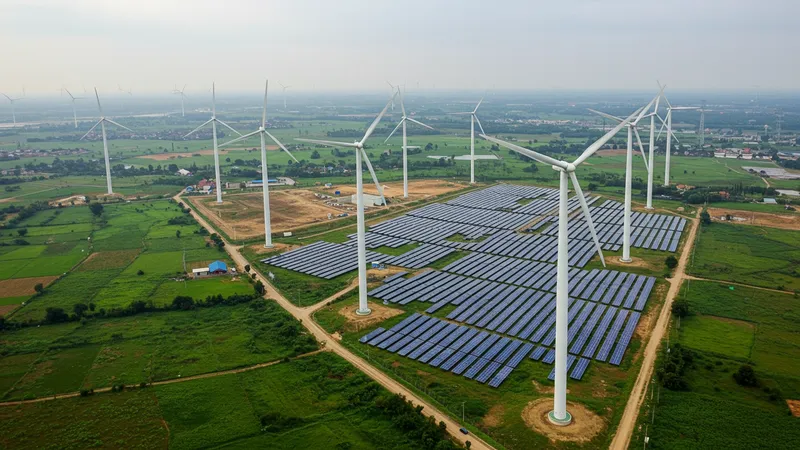
From establishing wind farms that currently contribute to 20% of its national energy footprint to fostering solar enterprises, the country is powering its industries with renewable energy sources. Vietnam’s investments are not only cost-efficient but are designed to benefit the environment while stimulating new economies.
More innovative solutions in the transportation and construction sectors showcase Vietnam's intent to harmonize growth with environmental stewardship. With green tech solutions and government incentives, Vietnam is all set to lead regional green energy initiatives.
This green shift hints at more than environmental consciousness. It's an intentional plan to integrate long-term ecology with rapid economic advancement. Bold and ambitious, Vietnam continues to surprise and inspire, rallying nations to reconsider growth paradigms.
Vietnam isn’t backpedaling in agriculture; it’s pioneering with a powerhouse crop—rice. Being one of the largest rice exporters, Vietnam is navigating a new agricultural revolution, where traditional rice cultivation intersects with innovative technology.
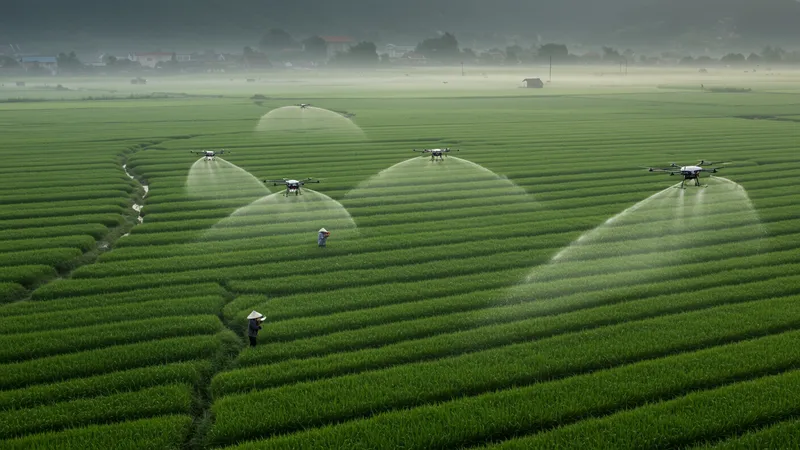
Efficiency-driven cultivation practices have minimized resource use while maximizing yields, significantly improving the farmers' living conditions. Vietnamese rice is now not only a staple but an emblem of sustainable agricultural prowess.
In pursuit of quality rather than quantity, Vietnam addresses food security challenges by embracing crop diversification, ensuring harvests that withstand climatic variances. These resiliences spell a promising outlook for both local consumption and international trading prospects.
The story here is not merely of farming advancement but also of rural communities thriving amidst modern shifts, enabling a brighter economic future. Vietnam's rice revolution continues to unfurl, poised to leave a lasting impression on the global agricultural stage.
Vietnam’s potential as a tourism hub isn’t a new story. However, the narrative has pivoted towards sustainable and cultural tourism, revealing dimensions of Vietnam that had long remained hidden beneath its vibrant cities and stunning landscapes.
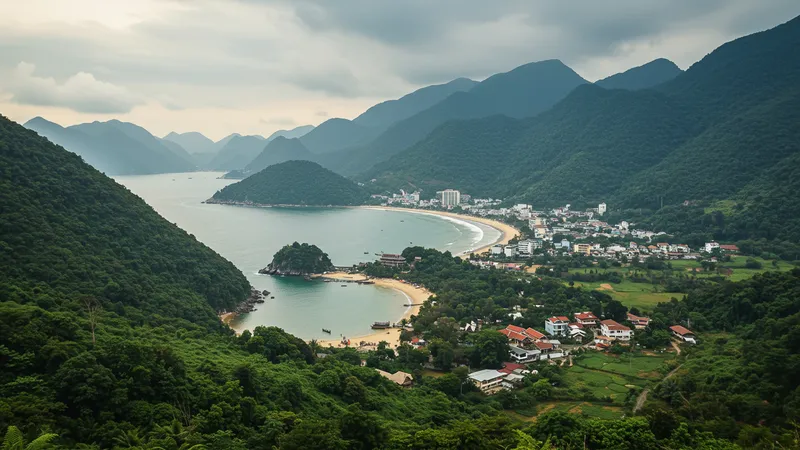
From pristine beaches in Da Nang to the adventurous terrains of Sapa, visitors discover a tapestry of experiences that prioritizes eco-tourism and cultural immersion over commercialization. Travelers are encouraged to thrive in Vietnam's rich biodiversity—an initiative that ensures preservation amidst growing arrivals.
Smart tourism development embraces technology, using apps to narrate cultural stories right from a visitor’s smartphone. This tech-savvy engagement reflects a tailored experience that adjusts to new-age tourists eager for authenticity.
Perhaps the overarching lesson of Vietnam’s tourism revolution is its commitment to orienting the sector toward responsible practices, ensuring a positive impact on communities and the environment. Vietnam’s embrace of its storied past and promising future resonates far beyond its borders, marking an unexpected transition worth exploring.
Vietnam’s commitment to education reveals a landscape of innovative thinking and dedicated investment. With far-reaching policies emphasizing quality education, Vietnam moves from an under-the-radar contender to a formidable force in global academia.
Government pushes for educational reforms have already made waves, with public schools enhancing curricula to match international standards. Remarkably, Vietnam scores impressively in global education assessments, positioning itself as a beacon of learning achievement.
From an increase in STEM-focused programs to international collaborations, there is a compelling drive towards inclusive education. This growth ensures that the future workforce is equipped with skills relevant in a rapidly evolving global economy.
Vietnam’s academic strides illuminate broader implications for national progress, showcasing how access to quality education is a cornerstone of sustainable development. What’s evolving in Vietnam’s classrooms could well dictate its future on the world stage—an evolution worth tracking.
Vietnam is bridging tradition and transformation, morphing into a digital haven filled with innovation potential. Riding the wave of robotization, AI, and advanced analytics, Vietnam is scripting a story of opportunity, making gains in technology that resonate globally.
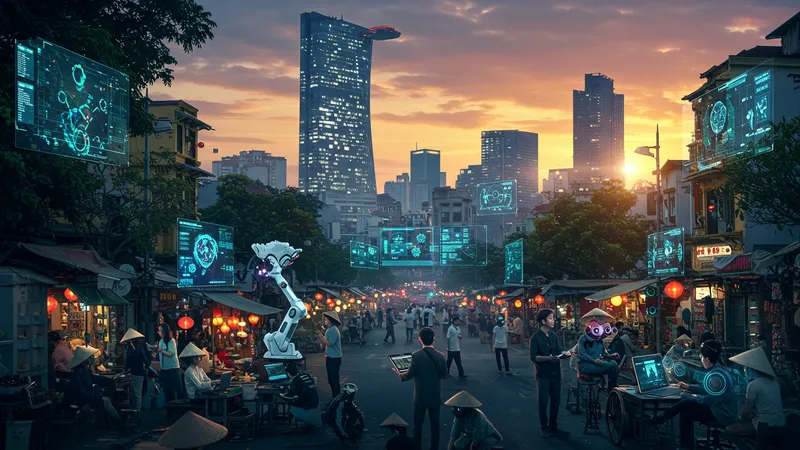
Whether it’s Hanoi’s startups crafting digital experiences or Ho Chi Minh City embracing mega tech parks, the nation’s technology sector is buzzing with energy and creativity. These tech forays aren’t just speculative; they’re fundamentally reshaping Vietnam’s industrial and consumer landscapes.
Skyrocketing digital literacy among the young population creates a vibrant network of tech enthusiasts and developers who contribute to Vietnam’s stride towards being a tech hub in Asia. This cultural shift promises economic buoyancy and wider horizon for Vietnam.
Tech transformation in Vietnam goes beyond infrastructure—it represents national ambitions and possibilities that stretch far into the future. The multi-faceted tech narrative is evolving and capturing imaginations, spotlighting Vietnam as a dynamic player in the digital domain.
While manufacturing catches the spotlight, Vietnam's agricultural ascendancy remains a consistent force driving national progress. The agricultural sector endeavors in a remarkable adaptation as it scales to meet food demands with an eye on sustainability.
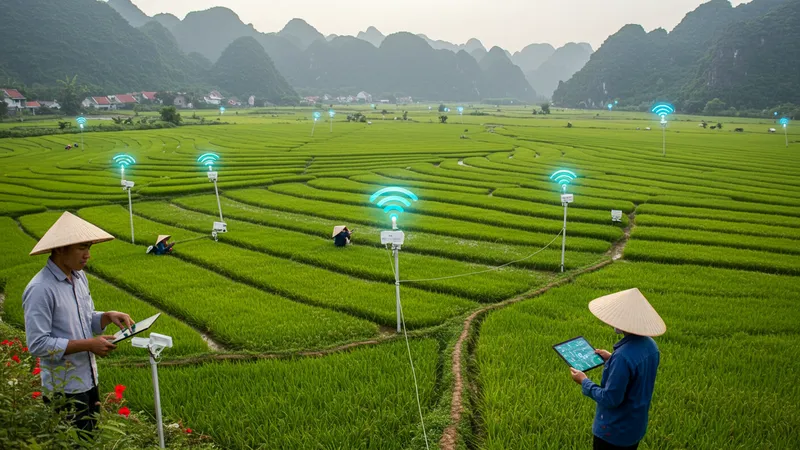
Incorporating technology into traditional farming practices not only enhances productivity but also preserves Vietnam’s rich biodiversity. Smart farming solutions, including IoT-enabled devices, allow for precise agriculture management, ensuring minimal environmental footprint.
The agricultural narrative extends beyond resilient practices, addressing national food security and prosperity. The alignment of local farmers with market-based cooperatives fosters a thriving ecosystem where innovation and tradition intertwine seamlessly.
Vietnam’s ascent in agriculture symbolizes a broader version of progress—melding development with ecological stewardship. This sector remains foundational to Vietnam’s economy as its agricultural prowess continues to nurture ambitions that reach well beyond its geographic borders.
As we draw the curtains on Vietnam’s incredible odyssey, we realize that its rise is not a mere flash in the pan but a meticulously crafted journey towards global prominence. Through a blend of tradition and innovation, Vietnam is redefining success and inviting the world on its transformative voyage.
The momentum Vietnam maintains is compelling to behold—exporting not just products, but insights on how to balance growth with sustainability and inclusivity. Share this remarkable journey with others, and watch as Vietnam reshapes tomorrow with the audacity to dream big and the resolve to innovate.